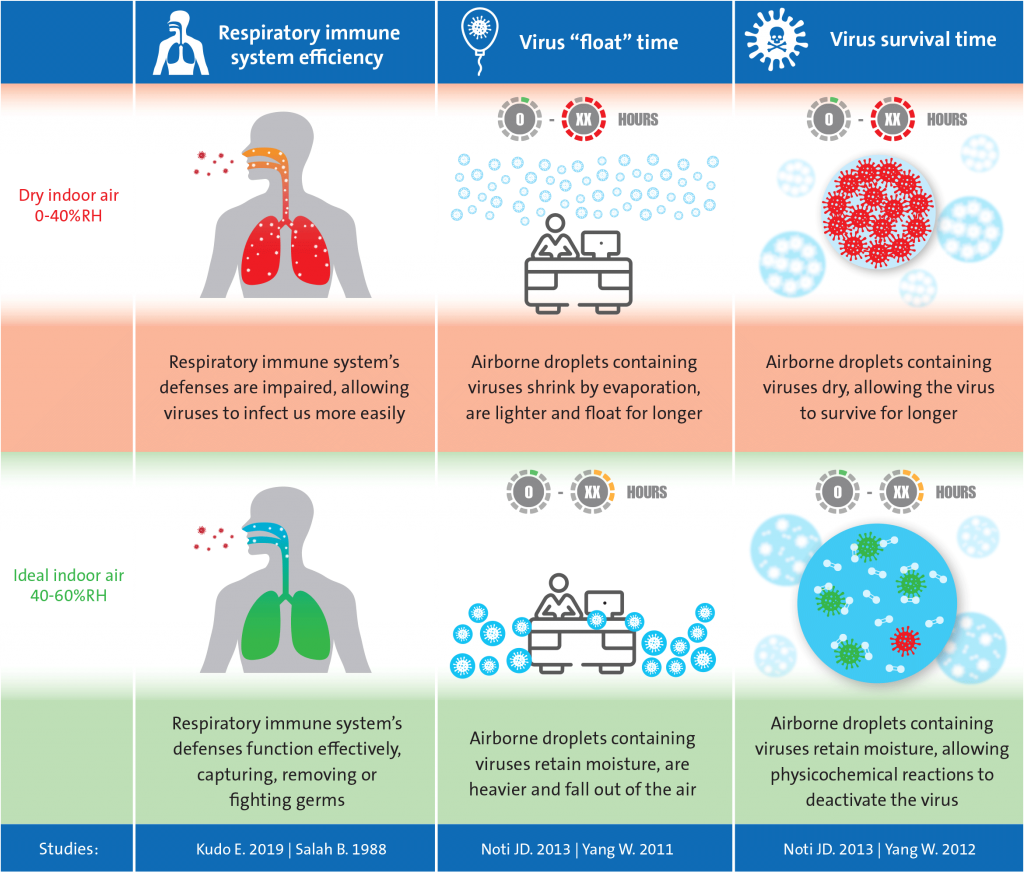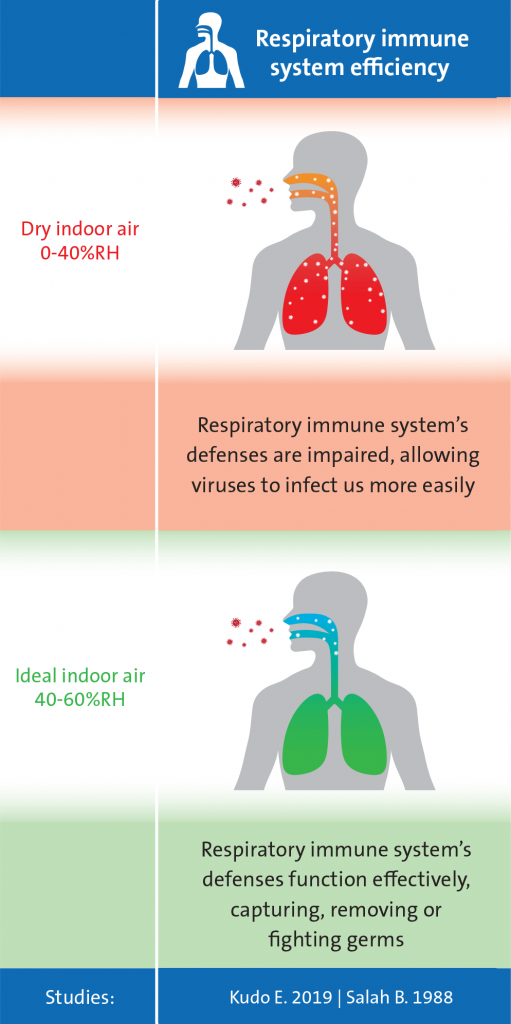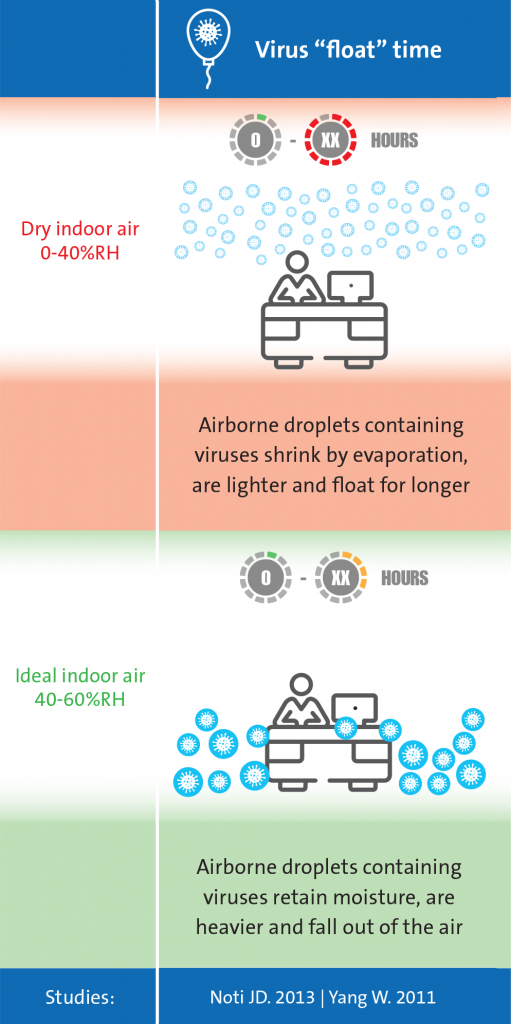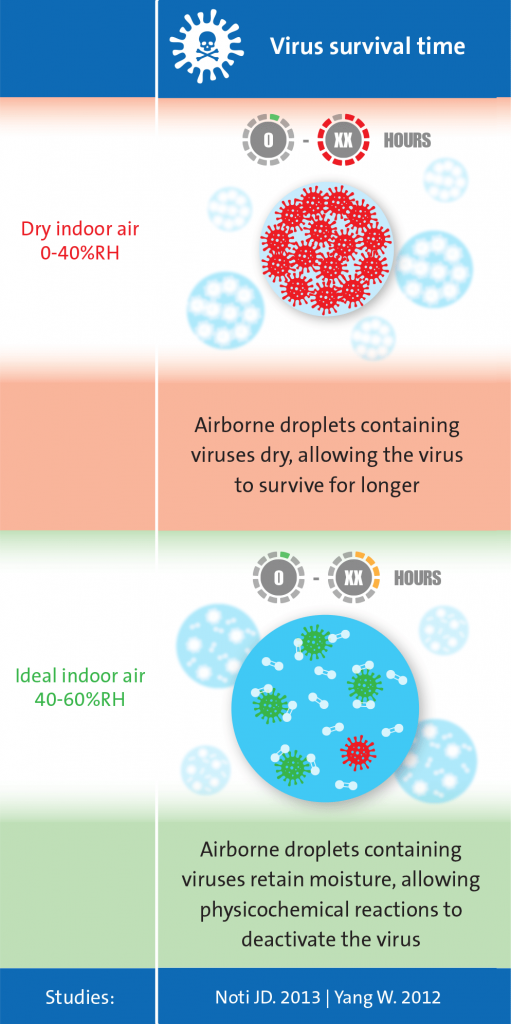The World Health Organization sets guidance for indoor air quality on issues such as pollution and mold. It currently offers no recommendations for a minimum humidity level in public buildings.
If it were to publish guidance on minimum levels of humidity, building standards regulators around the world would need to update their own requirements. Building owners and operators would then take steps to improve their indoor air quality to meet this minimum humidity level.
This would lead to:
- Respiratory infections from seasonal respiratory viruses, such as flu, being significantly reduced.
- Thousands of lives saved every year from the reduction in seasonal respiratory illnesses.
- Global healthcare services being less burdened every winter.
- The world’s economies massively benefiting from less absenteeism.
- A healthier indoor environment and improved health for millions of people.
Please, WHO – listen to the science on indoor humidity and act now!
“Ninety percent of our lives in the developed world are spent indoors in close proximity to each other. When cold outdoor air with little moisture is heated indoors, the air’s relative humidity drops to about 20%. This dry air provides a clear pathway for airborne viruses, such as COVID-19.
In addition to this, our immune system’s ability to respond to pathogens is suppressed by dry air.
Studies have shown that there is a sweet spot in relative humidity. Air of between 40% and 60% shows substantially less ability to transmit viruses and allows our nose and throat to maintain robust immune responses against them.
That’s why I recommend humidifiers during the winter, and why I feel the world would be a healthier place if all our public buildings kept their indoor air at 40 to 60%RH.”
Prof. Dr. Akiko Iwasaki,
The Waldemar Von Zedtwitz Professor of Immunobiology and professor of molecular, cellular and developmental biology at Yale, and an investigator for the Howard Hughes Medical Institute.

“Maintaining an indoor humidity of at least 40%RH is a proactive way to combat the spread of viruses from infected to susceptible hosts, even before any symptoms appear or a diagnosis can be made. Additionally, the respiratory tract’s defenses of both hosts are improved, due to the more efficient cleaning of the airways and enhanced immune defenses.
Raising air humidity by humidification reduces the risk of microbial spread in hospitals and other buildings at low-cost and without causing negative effects. It can also be easily implemented in public buildings and in both private and workplace environments. Humidification gives people a simple means of actively combatting seasonal respiratory infections, including the fearsome SARS-CoV-2 virus, for which there are currently no vaccines or effective drug treatments.
This is why I am calling on the WHO to review the available science on this important topic and develop guidelines on indoor air quality that will set a minimum level of humidity in public buildings for health.”
Walter Hugentobler, Dr. med.,
MD, General Physician, former lecturer Inst. of Primary Care at University of Zürich
“The containment of the COVID-19 pandemic requires a worldwide lockdown. While this is extremely effective in reducing outdoor contagion, it does not prevent indoor transmission of SARS-CoV-2. All available evidence points to proper control of indoor humidity levels as a factor that drastically reduces the half-life of aerogenic viruses and may even enhance the mucosal innate-immunity defenses against them.
I call on the World Health Organization to review the many studies relating to low indoor humidity and health, and take action to mitigate seasonal illness and improve the health of building occupants across the world.”
Prof. Dr. Adriano Aguzzi,
Professor and director of the Institute of Neuropathology at the University of Zurich, and Editor-in-chief Swiss Medical Journal








